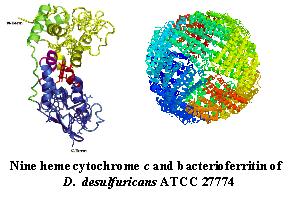Research
Bacterial responses to nitrosative stress
Nitric oxide constitutes one of the several weapons that mammal immune system has to fight invading prokaryotic pathogens and parasites. One focus of the group is the characterization of the cellular responses used by pathogens to survive nitrosative stress. The high prevalence of infectious diseases of difficult therapy which are related with antibiotic resistance and lack of efficient alternative pharmacological treatments show the relevance of these studies.
Oxygen resistance of anaerobic organisms
Desulfovibrio species are found in soil, sediment and subsurface environments, and involved in relevant industrial biodegradation processes. More recently, these bacteria have been associated with human pathogenicity, either directly or as opportunists. Although considered strict anaerobes these bacteria show a quite a broad range of sensitivity to dioxygen, sustaining transient exposure to oxygen. In fact, the recent release of the genome sequence of the SRB D. vulgaris showed that it contains genes encoding for cytochrome oxidases. A second focus of the group is the comprehensive study of the Desulfovibrio oxidases that includes genetical, microbiological and biochemical tools.
Development of expression systems for production of metalloproteins: from gene to protein, from protein to functionů
The major challenge during heterologous expression of metalloproteins is to provide appropriate incorporation of the prosthetic group to the polypeptide chain. Our group have been developing expression systems that proved capable of production of metalloproteins containing flavins, hemes, iron-sulfur centers, iron and cooper. We have been studying the function of several metalloproteins from a wide range of bacteria using a combination of techniques (cloning, site-directed mutagenesis, expression, protein purification, biochemical characterisation and structural studies). This work is done in collaboration with other groups of the Biological Chemistry Division of ITQB.
Target organisms
Desulfovibrio vulgaris, Desulfovibrio desulfuricans ATCC 27774, Rhodothermus marinus, Nanoarchaeum equitans, Escherichia coli K-12, Staphylococcus aureus, Acidianus ambivalens, Methanococcus jannaschii and Archaeoglobus fulgidus .

